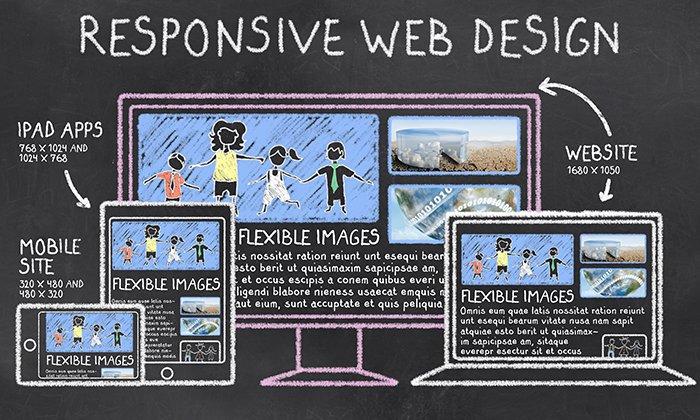C155C Chronicles
Exploring the latest trends and insights.
Responsive Web Design: The Secret Ingredient for a Mobile-First World
Unlock the secret to stunning mobile-first websites! Discover how responsive web design can elevate your online presence today!
Understanding the Principles of Responsive Web Design: A Guide for Beginners
Responsive Web Design is a modern approach to web development that ensures your website functions seamlessly across a variety of devices and screen sizes. At its core, responsive design uses a combination of flexible grids, layouts, and media queries to adapt the user interface to different viewing environments. This means whether a visitor is using a smartphone, tablet, or desktop computer, they will have an optimal experience. For beginners, understanding the principles of responsive web design is crucial for creating websites that are not only visually appealing but also user-friendly. To learn more about the basics of responsive design, check out this guide from Smashing Magazine.
One of the key components of responsive web design is the use of media queries. These are CSS techniques that allow you to apply different styles depending on the device's characteristics, such as its width or orientation. For example, you might have one layout for screens wider than 768 pixels and another for narrower screens. Additionally, implementing a fluid grid layout is essential; this involves using percentage-based widths rather than fixed sizes. This kind of flexibility aids in ensuring that your content remains accessible and visually coherent across devices. To dive deeper into this topic, explore the comprehensive W3Schools tutorial on media queries.

Why Responsive Web Design is Essential for a Successful Mobile-First Strategy
In today's digital landscape, responsive web design is not just a trend; it's a necessity for any business aiming to implement a successful mobile-first strategy. With more than half of global internet traffic coming from mobile devices, having a website that adapts seamlessly to different screen sizes and orientations is crucial. A responsive design ensures that users enjoy an optimal viewing experience, whether they are on a smartphone, tablet, or desktop. This adaptability not only enhances user engagement but also contributes significantly to SEO rankings, as search engines favor mobile-friendly websites. For further insights into the importance of responsive design, check out this article from Smashing Magazine.
Moreover, a successful mobile-first strategy means prioritizing mobile users right from the start, which entails creating sites that first cater to small screens before adapting to larger devices. Responsive web design plays a pivotal role in this approach by utilizing flexible grids, images, and CSS media queries to ensure consistency and functionality across all platforms. When businesses fail to adopt responsive design, they risk losing potential customers and damaging their brand reputation. To gain a deeper understanding, explore this comprehensive guide from W3Schools, which outlines the principles and benefits of responsive design.
Common Myths About Responsive Web Design Debunked: What You Need to Know
Responsive web design is often surrounded by misconceptions that can lead to poor decision-making for website owners. One common myth is that responsive design is merely a trend rather than a necessity. In reality, with the increasing variety of devices used to access the internet, including smartphones, tablets, and laptops, having a responsive design is crucial for providing an optimal user experience. Search engines like Google prioritize mobile-friendly sites, which means that failing to embrace responsive design can adversely affect your website's visibility and search engine rankings.
Another prevalent misconception is that responsive web design is overly complicated and costly to implement. While it may require a shift in design and development strategies, the long-term benefits outweigh the initial challenges. Responsive design can actually save time and resources by eliminating the need for separate mobile sites. For further clarity on this issue, check out this article, which elaborates on the cost-effectiveness and ease of maintaining a single responsive website compared to multiple versions.